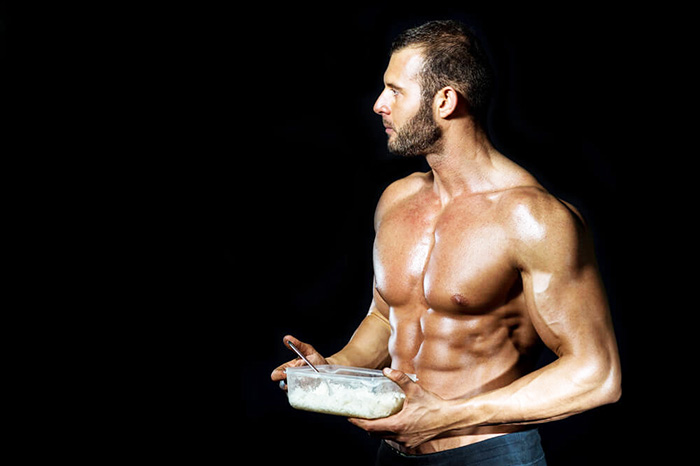It’s no secret that exercising on a regular basis is good for you. However, there are exercises that can actually do more harm than good, fitness trainers admit. Either they can put your joints in danger or simply waste your time.
This article will discuss some of the exercise moves that you should turn your back on.
Got family members and friends who are just as fitness-minded like you? Then make sure that you share this article on your various social media sites to that they could also avoid the following exercises:
Crunches
If you think that doing crunches can make your belly fat disappear into thin air, better think again. It’s not washboard abs that you might get from crunches, but achy lower back and neck especially if you perform them incorrectly.
Rather than spend a great deal of time on carrying out crunches and putting your spine in peril, fitness experts say that it’s a much better idea for you to focus on doing planks instead.
Doing planks is great for strengthening your core muscles. Not only will it make your tummy flatter, but also make your back stronger and more resistant to aching.
Leg Raises
You may have heard or read somewhere that leg raises are phenomenal flatteners of the abdomen, in particular the lower portion of it. According to fitness experts, however, leg raises can put a lot of stress on your lower back — no one can have a smooth-sailing day with a lower back that hurts.
Besides, just like crunches leg raises are incapable of making fatty tissue in your midsection melt off.
Again, it’s a much better idea for you to spend your time on doing planks rather than leg raises. Can’t completely turn your back on doing leg raises? In order to keep your risk of hurting your lower back to a minimum, fitness experts suggest for you to raise one leg at a time.
Tricep Dips
Women who like to have slimmer upper arms most especially are heads over heels with tricep dips. While it’s true that tricep dips can in fact target the triceps — the muscle situated opposite your biceps — you may end up with injured shoulders sooner or later doing them.
Fitness experts say that your shoulder joint is comprised by a lot of bones and can perform a wide range of movements, but it’s one of the least stable joints in your body.
Needless to say, your shoulder joint requires a lot of TLC, which is a favor that you are not providing it with each time you perform tricep dips. While at the gym, you could lower your risk of ending up with a shoulder injury by doing cable tricep extensions instead.
Knee Tuck Jumps
Most people who could perform knee tuck jumps flawlessly and for several reps at a time tend to look really fit. This is exactly the reason why you may be encouraged to make knee tuck jumps part of your exercise regime.
It’s a good idea for you to give knee tuck jumps a knee to the groin — they’re bad for you, fitness experts say.
It’s quite evident that knee tuck jumps can injure your weight bearing joints such as the ankles and knees. This is most especially true if you perform them on concrete — it’s for the same reason exactly why you don’t see NBA players playing basketball on concrete.
Deep Squats
Everyone knows that squats are great for giving the bum a head-turning shape. If you think that squatting beyond the recommended 90-degree angle will give you much noticeable results at a much faster rate, think again.
Fitness experts agree that doing deep squats (also known as full squats) won’t give you the buttocks of your wildest dreams but what most nightmares of athletes are made of: a knee injury.
To sum up, the closer you take your behind to the floor while doing squats, the bigger your risk of ending up with an injured knee. There’s no need for you to turn your back on knee squats, though — just make sure that you do squats in the customary and correct manner.
It’s no secret that exercising on a regular basis is good for you. However, there are exercises that can actually do more harm than good, fitness trainers admit. Either they can put your joints in danger or simply waste your time.
This article will discuss some of the exercise moves that you should turn your back on.
Got family members and friends who are just as fitness-minded like you? Then make sure that you share this article on your various social media sites to that they could also avoid the following exercises:
Crunches
If you think that doing crunches can make your belly fat disappear into thin air, better think again. It’s not washboard abs that you might get from crunches, but achy lower back and neck especially if you perform them incorrectly.
Rather than spend a great deal of time on carrying out crunches and putting your spine in peril, fitness experts say that it’s a much better idea for you to focus on doing planks instead.
Doing planks is great for strengthening your core muscles. Not only will it make your tummy flatter, but also make your back stronger and more resistant to aching.
Leg Raises
You may have heard or read somewhere that leg raises are phenomenal flatteners of the abdomen, in particular the lower portion of it. According to fitness experts, however, leg raises can put a lot of stress on your lower back — no one can have a smooth-sailing day with a lower back that hurts.
Besides, just like crunches leg raises are incapable of making fatty tissue in your midsection melt off.
Again, it’s a much better idea for you to spend your time on doing planks rather than leg raises. Can’t completely turn your back on doing leg raises? In order to keep your risk of hurting your lower back to a minimum, fitness experts suggest for you to raise one leg at a time.
Tricep Dips
Women who like to have slimmer upper arms most especially are heads over heels with tricep dips. While it’s true that tricep dips can in fact target the triceps — the muscle situated opposite your biceps — you may end up with injured shoulders sooner or later doing them.
Fitness experts say that your shoulder joint is comprised by a lot of bones and can perform a wide range of movements, but it’s one of the least stable joints in your body.
Needless to say, your shoulder joint requires a lot of TLC, which is a favor that you are not providing it with each time you perform tricep dips. While at the gym, you could lower your risk of ending up with a shoulder injury by doing cable tricep extensions instead.
Knee Tuck Jumps
Most people who could perform knee tuck jumps flawlessly and for several reps at a time tend to look really fit. This is exactly the reason why you may be encouraged to make knee tuck jumps part of your exercise regime.
It’s a good idea for you to give knee tuck jumps a knee to the groin — they’re bad for you, fitness experts say.
It’s quite evident that knee tuck jumps can injure your weight bearing joints such as the ankles and knees. This is most especially true if you perform them on concrete — it’s for the same reason exactly why you don’t see NBA players playing basketball on concrete.
Deep Squats
Everyone knows that squats are great for giving the bum a head-turning shape. If you think that squatting beyond the recommended 90-degree angle will give you much noticeable results at a much faster rate, think again.
Fitness experts agree that doing deep squats (also known as full squats) won’t give you the buttocks of your wildest dreams but what most nightmares of athletes are made of: a knee injury.
To sum up, the closer you take your behind to the floor while doing squats, the bigger your risk of ending up with an injured knee. There’s no need for you to turn your back on knee squats, though — just make sure that you do squats in the customary and correct manner.








